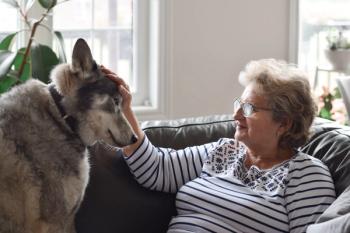
Q&A: Why are the bills so high for my equine practice?
Q. The inventory for our practice's equine work seems out of control and the payables are piling up. How do I manage inventory without losing money?
Q. Dr. Guenther, I recently read your article about equine inventory management (
A. "There's no silver bullet to fix your accounts payable," says Dr. James Guenther, MBA, CVPM, owner and president of Strategic Veterinary Consulting in Asheville, N.C. "The reason is simple: Payables are a symptom of a bigger problems." First, Dr. Guenther recommends you look at your cash flow. You can't pay bills on equine inventory if you don't have the liquid cash. Next, find out why you're low on cash and where to look. Here are a few possible problem spots. Each may require a full team effort to fix:
Too many dollars tied up in accounts receivable. To solve this problem, Dr. Guenther recommends you reduce the days bills sit in accounts receivable and the total dollar figure allowed to sit.
Missed charges. Review your client invoices. One major practice management software company estimates that veterinarians miss an average 20 percent of charges. You'll find at least 10 percent to 15 percent of the client charges are missed, which translates to lower cash flow.
Improper pricing for services and products. "When was the last time the practice owners examined their fee schedule and made appropriate adjustments?" Dr. Guenther says. Compare your fees to industry, regional, and local benchmarks.
Staffing. You may have too many employees or lack the protocols and procedures in place to make them efficient and effective. Streamlining your processes can improve the cash flow of the practice.
Too much focus on products. Inventory isn't a major profit center for veterinary practices anymore. Clients today purchase veterinary products from many alternative sources, which makes us just players in a bigger retail game. More and more practices are turning to online stores to fulfill their clients' orders for monthly or chronic-disease medicines. "An online pharmacy becomes a smaller profit center, but a reliable one with less hassle," Dr. Guenther says.
Dr. Guenther says you can often make up what you lose from your pharmacy on services. "There's more profit from a service than a product sale anyway," he says.
Finally, there are the doctors themselves. "I've found that veterinarians, especially owners, aren't always fully committed to bringing inventory under control," Dr. Guenther says. "If they're not on board, the rest of the staff will be fighting an uphill battle with limited success." Make sure you and your entire team are ready and willing to make the changes that will boost cash flow and keep worries about outstanding bills off your mind.
Newsletter
From exam room tips to practice management insights, get trusted veterinary news delivered straight to your inbox—subscribe to dvm360.






